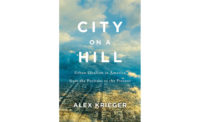If youth is wasted on the young, academia is all too often wasted on the academics. Free to tackle the most pressing subjects, scholars often gravitate to minutiae. But not Alexander Eisenschmidt, professor of architecture at the University of Illinois at Chicago and debut author of the impressively ambitious new book The Good Metropolis.
Eisenschmidt audaciously argues that a central tension in modern city-building has gone hiding in plain sight. While architects are by nature control freaks, sweating the details of their artifacts, the space where their creations are housed—the modern metropolis—is, by nature, out of control. As Eisenschmidt writes, “architecture’s inherent predisposition towards form is often matched only by the city’s ability to avoid it.”
Facing this tension since the dawn of modernity, many architects have regarded the metropolis as a problem to be solved. Indeed, cityplanning itself was largely founded to “curtail [the city’s] disorder.”
But while many urbanists have sought to bring the unruly metropolis to heel, others have embraced the chaos, reveling in innumerable neighborhood nooks. From Walter Benjamin saluting the imaginative play of impoverished children in the Berlin slums’ courtyards to Robert Venturi and Denise Scott Brown’s enthusiasm for the Mafia-financed sprawl of the Las Vegas Strip, Eisenschmidt retraces an unsung tradition of celebrating the unplanned. This outlook has been consummated by architects who purposefully design works of “metropolitan architecture” that welcome the chaos. Ranging from block-size department stores to high-rise urban sports clubs, these buildings don’t resist the city but, rather, “inhal[e] urbanity into [their] interiors.”
Eisenschmidt convincingly argues that Berlin was the fount of this sanguine response to the metropolis. In the late 19th century, the Prussian capital was one of the fastest-growing cities on earth, yet it wasn’t until 1920 that the Greater Berlin Act even attempted to tame the sprawl, through a single urban planning authority. While there were always those who railed against the unruly decadence of Berlin, there were others who hailed the city’s Planlosigkeit (lack of a plan). Eisenschmidt retraces this intellectual thread, highlighting Jugendstil architect and urbanist August Endell, whose 1908 The Beauty of the Metropolis argued that the heart of the city was its margins, and László Moholy-Nagy, whose artistic eye sought out these overlooked spaces.
The current relevance of this Berlin-born tradition of delirious urbanism should be made more explicit. After all, the key to Berlin’s historic breakneck growth was its late start; the city could boom because it was playing catch-up to the more developed cities to its West—and then surpassing them. This same phenomenon is driving the growth in developing-world megacities like Dubai and Shenzhen today.
Of course, better a book that challenges received wisdom—is the metropolis really a beast to be tamed?—than a monograph that painstakingly supports it. Eisenschmidt’s unfashionable intellectual instinct to bite off more than he or maybe anyone can chew is most welcome. All should eagerly tune in to his future broadcasts.








Post a comment to this article
Report Abusive Comment